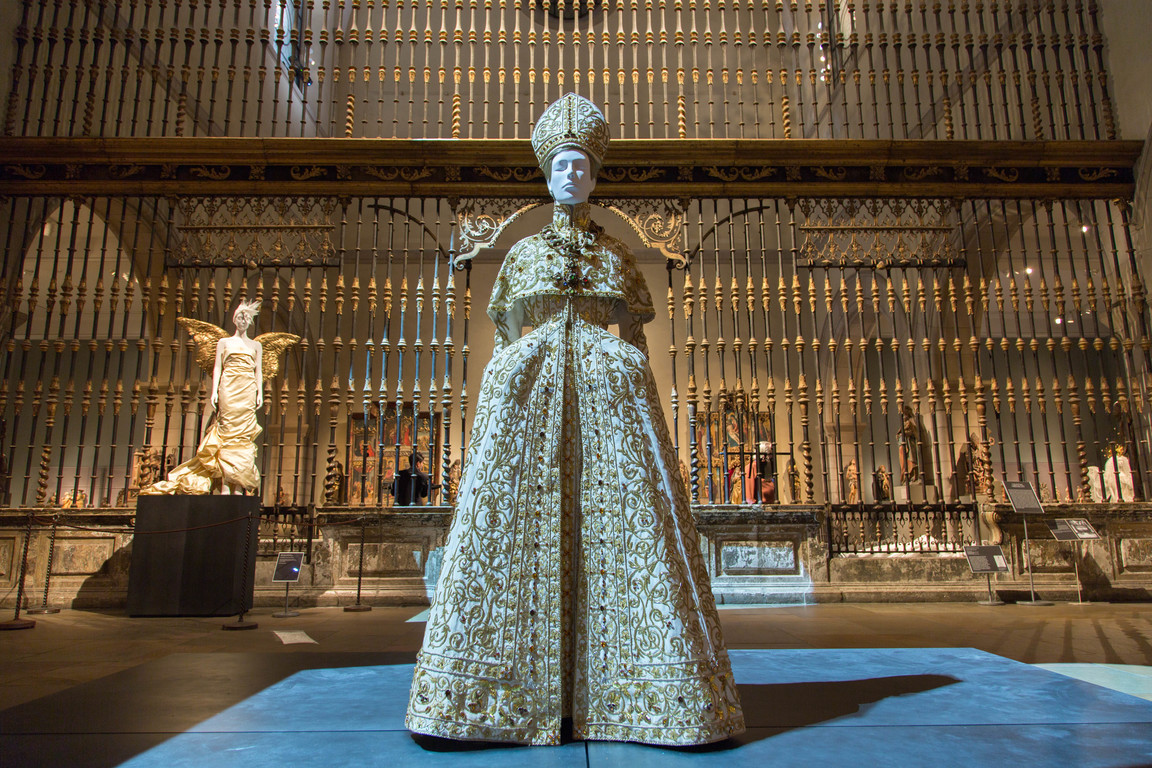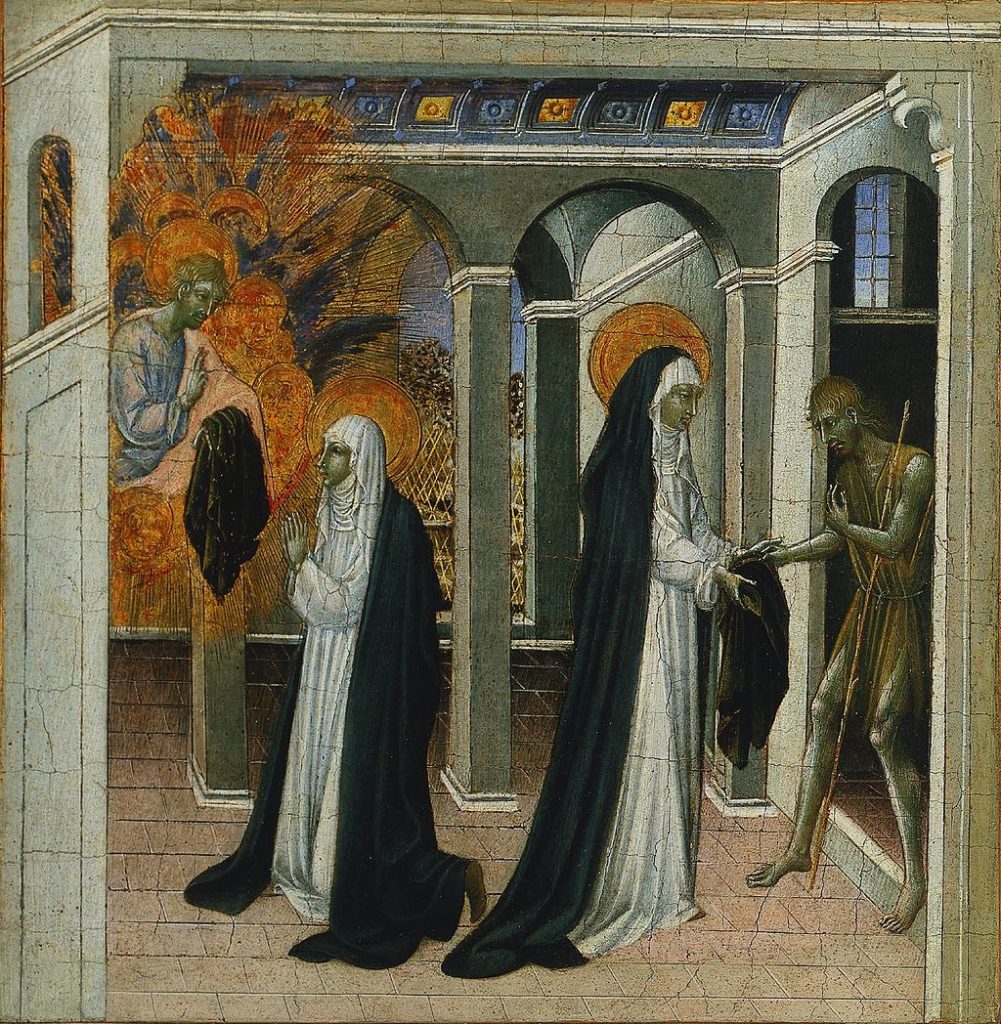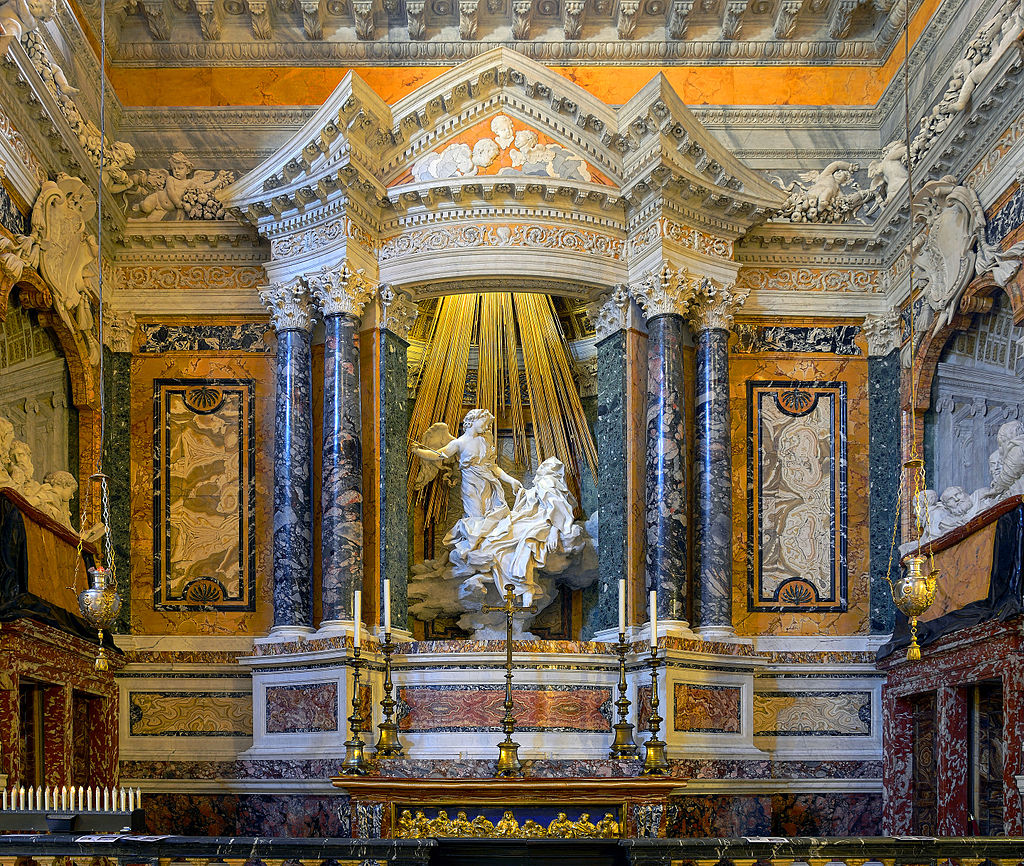A member of the clergy is not just distinguished by dress; he is literally created by it. In the Middle Ages, a man became a monk by assuming a habit; a woman became a nun by accepting the veil. By the same token, a cleric would be degraded from office by a ritual undressing, a process which entailed a painstaking disinvestment of garments in descending order, until he was demoted to lay status.1Elliott, Dyan. “Dressing and Undressing the Clergy: The Rites of Ordination and Degradation.” In Medieval Fabrications: Dress, Textiles, Cloth Work, and Other Cultural Imaginings, edited by E. Jane Burn, 55-69. New York: Palgrave, 2004.
Although liturgy attempts to simulate an aura of timelessness, liturgical garments were the invention of time. The bishops, priests, and deacons in the early church wore the same clothing as their secular counterparts. But from the fourth century, as the clergy rose in prestige, they began to distinguish themselves from the laity. Liturgical vestments acquired increasingly elaborate symbolism and ornamentation. It is not surprising that the famed red and white of papal vestments were adopted in the eleventh century under Leo IX and Gregory VII—ecclesiastical reformers who sought to separate the clergy definitively from the laity and place it under a centralized papacy. These colors signaled papal prestige to perfection: red, most commonly associated with Christ’s passion, specifically, and martyrdom, generally, and white, with virginity and purity. At the time of the reform, many, perhaps the majority, of the clergy below the rank of bishop were married. The newly reformed clergy was, above all, distinguished by their chastity. The priest was the walking symbol of his chaste vocation: the white alb represented purity of the soul; his belt, chastity. The bishop wore three tunics: the white linen tunic signified purity; the silk tunic—the work of worms, which were believed to be generated spontaneously without coitus—represented chastity and humility; the third was the color of hyacinth, indicating airy serenity.2 Robert of Flamborough. Liber poentientialis 3.90, edited by J.J. Francis Firth (Toronto: Pontifical Institute of Medieval Studies, 1971), 111-13.

Image: © The Metropolitan Museum of Art
Heavenly Bodies presents a number of interesting challenges to such ecclesiastical pretensions. For instance, the timelessness of clerical vestments is here appropriated by the timely and eminently mutable world of fashion. There are also some interesting inversions at work. The modern styles, designed primarily by men for women, are modeled on vestments that were very specifically intended for men, though often designed by women. Medieval noblewomen, proficient in needlework, were solicited by members of the clergy to make or retrofit costly liturgical garments in return for prayers at communion, and many of these women were happy to comply. Maureen Miller’s examination of surviving medieval vestments demonstrates how women’s work with textiles afforded them the opportunity to handle and refurbish garments that often contained saintly relics. Miller observes that “such projects would have provided very rare moments of direct access to relics for women who were not even allowed to enter the sanctuary or approach the altar.”
Liturgical vestments are otherworldly by design. Yet beneath the episcopal miter, we are accustomed to seeing a masculine (and usually wizened) visage, and beneath the sumptuous robes we assume there is a parallel body to match. This is why Rihanna’s appearance at the Met Gala, in all her episcopal splendor, created such a stir: her youth, her beauty, and above all her sex—apparent not just by her facial appearance, but also by a provocative display of cleavage and legs.
There is undoubtedly an element of drag in contemporary women wearing quasi-clerical garb—drag charged with coquettish sacrilege. These women are assuming a couturier version of the very costume that was and is forbidden them, one that marks their exclusion from the priesthood. Interestingly, this is the kind of transgression a medieval audience could have identified with. In fact, the medieval version of women appropriating clerical costume outstrips contemporary fashionistas in sheer daring because the women in question do not merely dress up like men, they attempt to pass as men. The example of Pope Joan is a case in point. According to the legend, which is generally set in the ninth century, a woman named Joan concealed her sex and went to work in the papal curia, probably at the behest of a clerical lover. Distinguished by both her exemplary piety and learning, Joan quickly climbed the ladder of the ecclesiastical hierarchy and was eventually elected pope. But her sex was tragically revealed when, while in procession near the Lateran Palace, she went into labor and died. The moral lesson of Joan’s story has changed over time. Although now Joan is often presented as a proto-feminist iconoclast, the legend was invented by a thirteenth-century Dominican chronicler as a cautionary tale, illustrating just what an abomination it would be for a woman to be admitted to the priesthood and don liturgical garb.
Yet, clerical vestments also fostered eminently orthodox and commendable instances of medieval gender-bending. There are a number of famous “transvestite saints” whose lives turn on the expediency of a woman disguising her sex and entering a male religious community—usually because of the lack of religious options for women. More often than not, the woman, passing as a monk, is falsely accused of fathering a child and, rather than protesting her innocence, mutely accepts penance for a sin she could not have committed. She is exonerated posthumously when her body is prepared for burial and her true sex comes to light.3 Anson, John. “The Female Transvestite in Early Monasticism: The Origin and Development of a Motif.” Viator 5 (1974): 1-32. While the revelation of her sex is what condemns Pope Joan to hell, a parallel revelation marks her holy counterpart as a saint. Yet, despite these differences, such tales play on the transgression afforded by religious garments to conceal and/or transform gender.
The way in which clerical garb effaced gender roles was not limited to legend and hagiography. The Merovingian historian Gregory of Tours recounts how one abbess was accused of keeping a man in the convent. She vigorously denied this allegation only to discover that there was, in fact, a man who, for medical reasons, had been castrated in his youth and subsequently disguised himself as a female in a convent—apparently for safety.

Heavenly Bodies also points to the impact of the otherworldly allure of angels on fashion. Here too we find potential for gender-bending. Christ had said that there would be no marrying or giving in marriage in the afterlife, but that humankind would live like angels (Matt. 22:30). Elsewhere, Christ described those who voluntarily embraced chastity as eunuchs for the kingdom of heaven (Matt. 19:12). In their quest for clerical celibacy, eleventh-century reformers attempted to associate themselves with angelic androgyny, leading some historians to describe them as a third sex. Even so, there was a general consensus that angelic nature leaned toward the masculine. Christ’s allusion to “eunuchs for God” suggests as much. There was even a ribald tradition that Mary’s husband, Joseph (often depicted as an old man), had been cuckolded by a virile Gabriel. William of Auvergne, bishop of Paris (d. 1249), argued that if an angel appeared as a woman, it was a clear tip-off that it was really a demon succubus since no self-respecting angel would assume a female form. But while angels in early Christian art resemble cleanly-shaven Roman youths with androgynous overtones, as time progresses they become more feminine—first in art, then in ideology. In the Victorian era, the angel’s service to God is transformed into the wife’s service to her husband. Hence Coventry Patmore’s “The Angel in the House” proclaims: “Man must be pleased; but him to please / Is woman’s pleasure.”













